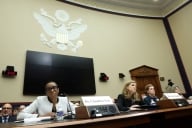You have /5 articles left.
Sign up for a free account or log in.

Istockphoto.com/Z_wei
Faculty searches are labor-intensive tasks. Committee members must review materials from dozens of applicants, select the most qualified candidates and arrange logistics -- everything from travel plans to agendas. A teaching demonstration is usually an important part of the applicant interview, as well, but planning for that demonstration is often overlooked.
That can be a big mistake. Teaching demonstrations can really distinguish superior candidates in a crowded pool and help committee members decide to whom to extend an offer. Members of the search committee should consider what course the candidates will teach, which students will participate in the demonstration and how you will gauge successful teaching. And if you are a member of such a committee, you should thoughtfully stage the teaching demonstration to use the time effectively and efficiently. The key steps are as follows.
Showcase. To be sure, planning an hourlong (or shorter) demonstration is not the same as organizing a three-credit course. However, a successful teaching demonstration correlates with broader success in the classroom. Carefully consider the information you want to glean from a candidate's teaching demonstration:
- content knowledge
- lesson organization
- audience ability to comprehend information
- interactions with students/audience
- use of available resources
Schedule. One major goal of organizing teaching demonstrations for finalists is to help the committee differentiate and decide among candidates. To that end, you should make sure that all candidates are equally set up for success. We recommend you follow these general guidelines when scheduling teaching demonstrations.
- If possible, hold the demo in an actual classroom in an actual course with enrolled students. Select one course that all the finalists can teach. While that takes time away from the regularly planned curriculum, students will be able to compare candidates and provide concise feedback about each.
- Once the committee has decided on a course, share the syllabus with all candidates. The committee should also create and give each candidate a document that communicates the size of the group, the technology available in the room and the program and year of students. Some candidates may ask questions before they arrive on the campus. The committee chair or point person should attempt to answer those questions without giving an unfair advantage to any one candidate.
- Designate a topic for the candidates to teach. There are three schools of thought on how this can be arranged. First, you could allow the candidates to teach on any topic they want. Second, you could require all candidates to teach the same highly specialized topic covered in the course where the demonstration will take place. Third, you could allow the candidates to choose from a small menu of options. We suggest the third option; you want each candidate to teach on a subject in which they have some background, but you also want them to plan something specifically for this demonstration and not recycle a tried-and-true presentation.
The day of the candidate’s interview, give them at least 10 minutes of time alone to set up in the classroom. That will also allow them to compose their own thoughts and ready themselves for the upcoming task. The better your committee sets up all candidates for the demonstration, the better information you will have when making your decision. Their success in teaching is your success at searching.
Stipulate. Before any candidates arrive on the campus, your search committee should agree on what characteristics you want in an ideal hire. As a team, organize your priorities in a rubric. All evaluators (even those potentially not on the search committee) should have this rubric on each candidate’s interview day. The rubric will help guide evaluators as they observe the lesson, and you should use it to structure the discussion after each candidate departs. The saved rubrics can also help your committee compare candidates when all interviews are complete.
Survey. During the teaching demonstration, committee members and other observes can evaluate a variety of things. What your committee chooses will largely depend on the culture of your institution. However, the list below could apply to teaching positions at many different types of colleges and universities.
- Engagement: How does the candidate interact with the audience? Effective teachers interact constantly on both the individual and group level. The teaching demonstration is an unnatural situation; can the candidate at least feign a level of comfort in a room full of strangers?
- Movement: Does the candidate shrink and hide behind the podium or lectern? Effective teachers solicit and hold attention by moving throughout the classroom, involving students along the way.
- Design: Like a good story, effective, organized lessons have an introduction, main body and conclusion. Does the demonstration have each of those pieces? Do they all work together to advance the class’s understanding?
- Accuracy: Does the candidate possess adequate depth of knowledge on the subject selected? Depending on the topic, the candidate may not be an expert, but they should not make any glaring errors and should be able to answer any questions that students raise.
- Creativity: Most candidates play it safe with a “content march” of direct instruction. The candidates that choose to take a risk with their lesson by encouraging student interaction and collaboration are more likely to be engaging teachers. Candidates who successfully execute a more creative lesson will be likely to excel in a real classroom.
- Reflection: Be sure the agenda for the interview day includes an opportunity for candidates to reflect on their success in the demonstration. All teaching demonstrations will include highs and lows. Strong teachers will be able to identify both the strengths and weaknesses of their lesson. Weak teachers will have a difficult time admitting their weaknesses.
Campus interviews are an inherently unnatural process, and teaching demonstrations are among the most unnatural components of that process. Your committee should do its best to arrange the teaching demonstration so that all candidates can reveal their teaching ability. You should want to garner a decent snapshot of how any candidate may act in a classroom of their own. An accurate and valid assessment of teaching demonstrations can go a long way in helping you select the best person for your institution.








